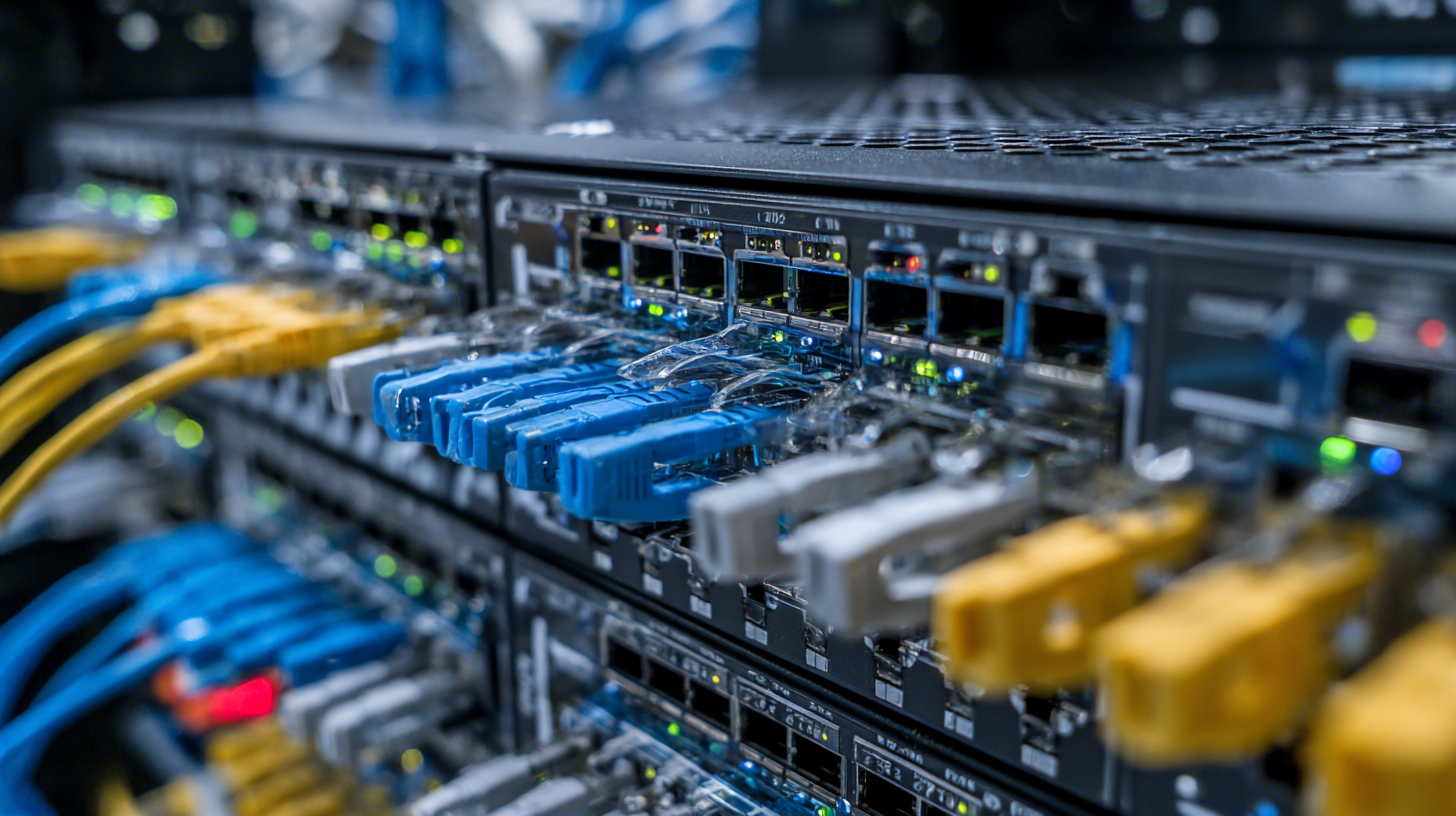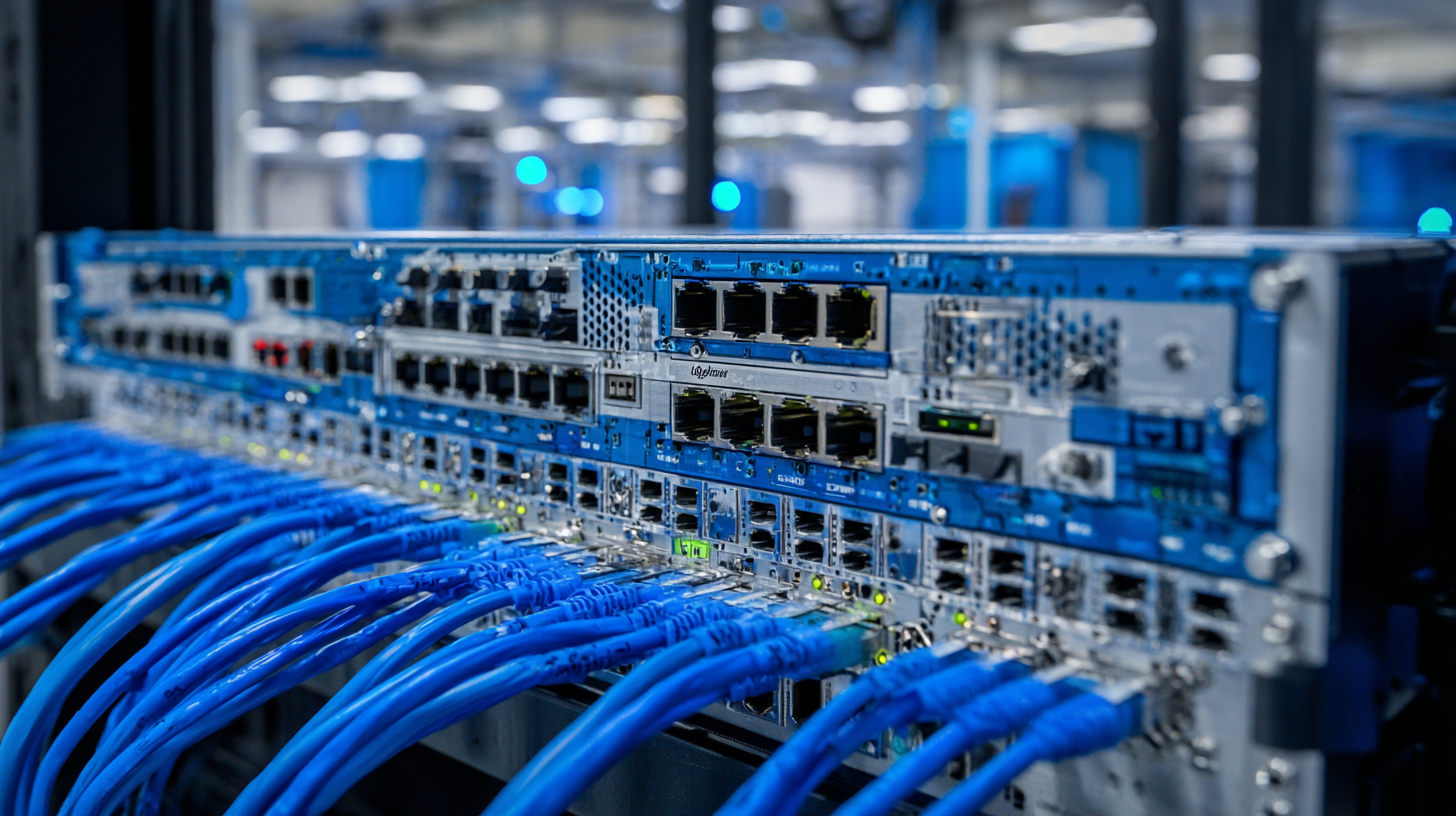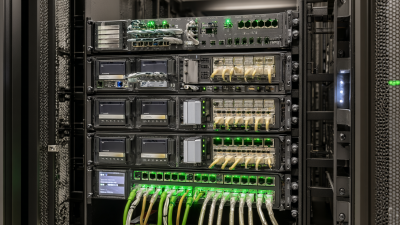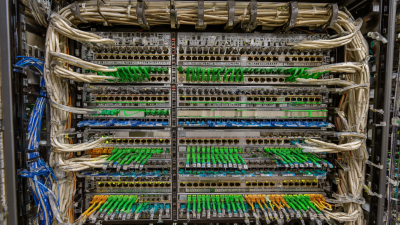In today's rapidly evolving digital landscape, the efficiency of network infrastructure is paramount for businesses seeking to maintain a competitive edge. According to industry studies, organizations that optimize their networking capabilities can experience up to a 30% increase in performance and a significant reduction in operational costs.

The Juniper QFX Series Network stands out as a pivotal solution designed to enhance network performance and reliability. With its advanced switching architecture, low latency, and scalable design, the QFX Series enables enterprises to meet the growing demands of cloud computing and data-intensive applications.
By implementing best practices tailored to the QFX Series, organizations can achieve improved bandwidth utilization and enhanced overall network efficiency, paving the way for a more agile and responsive IT environment.
The Juniper QFX Series switches are designed to enhance network performance through a variety of advanced features and configurations. To fully leverage the capabilities of these devices, organizations should consider implementing strategic network design principles.
For instance, utilizing Virtual Chassis technology allows multiple QFX switches to operate as a single entity, simplifying management and increasing redundancy. This approach not only optimizes physical resources but also ensures seamless scalability as network demands grow.
Additionally, deploying the QFX Series in conjunction with automation tools can significantly improve operational efficiency. By leveraging Junos Automation scripts, network administrators can automate routine tasks such as configuration updates and monitoring, reducing the potential for human error and freeing up valuable time for strategic initiatives.
Moreover, integrating the QFX Series with telemetry solutions enables real-time visibility into network performance, allowing teams to proactively address issues before they impact users. Embracing these strategies will ensure that organizations maximize the benefits of their Juniper QFX Series switches, driving enhanced network performance and reliability.
When evaluating the efficiency of the Juniper QFX Series, it's crucial to focus on key performance metrics that can provide insights into network operations. Metrics such as throughput, latency, and packet loss serve as vital indicators of how well the network is functioning. Throughput, which measures the amount of data successfully transferred over the network in a given time frame, helps in understanding the capacity limits and can guide capacity planning efforts.
 Latency is another critical metric that impacts network performance, as it reflects
the delay before a transfer of data begins following an instruction. Keeping latency low is essential for applications
that require real-time data exchange, such as video conferencing and online gaming. Additionally, monitoring
packet loss, which occurs when packets of data fail to reach their destination, is vital,
as it can lead to degraded user experiences and reduced application performance. By regularly reviewing these performance
metrics, network administrators can identify potential bottlenecks and enhance the overall efficiency of their
Juniper QFX network infrastructure.
Latency is another critical metric that impacts network performance, as it reflects
the delay before a transfer of data begins following an instruction. Keeping latency low is essential for applications
that require real-time data exchange, such as video conferencing and online gaming. Additionally, monitoring
packet loss, which occurs when packets of data fail to reach their destination, is vital,
as it can lead to degraded user experiences and reduced application performance. By regularly reviewing these performance
metrics, network administrators can identify potential bottlenecks and enhance the overall efficiency of their
Juniper QFX network infrastructure.
Optimizing network architecture with QFX switches is pivotal for enhancing overall network efficiency. The QFX series, known for its robust performance and scalability, can significantly improve data center operations by employing an intent-based networking approach. This methodology allows organizations to automate and optimize their network configurations dynamically, ensuring that resources are utilized effectively. According to industry reports, networks leveraging automation can reduce downtime by up to 80% while maximizing operational efficiency.

With the integration of AI-driven solutions, as demonstrated by recent advancements in data center technologies, the QFX switches can adapt to varying workloads in real-time. A multivendor lab, established for testing end-to-end AI data center solutions, exemplifies this shift towards intelligent networking. By cooperating across various platforms, organizations can harness AI capabilities to further refine their architectural strategies. Studies indicate that AI-native environments can yield a 30% improvement in workload management, establishing a strong case for the adoption of QFX switches in modern network infrastructures.
The Juniper QFX Series has been a game-changer in network performance, particularly in reducing latency and increasing throughput. According to a recent report by IDC, enterprises report up to a 40% reduction in latency when leveraging QFX Series switches in their data centers. This remarkable decrease is attributed to advanced technologies such as low-latency queuing and optimized packet processing, which enable faster data transmission across the network.
Furthermore, increasing throughput is critical in today’s data-driven environment. A study from the Ethernet Alliance highlighted that organizations using QFX Series switches have experienced throughput improvements of over 50% compared to traditional network solutions. This enhancement allows businesses to handle higher volumes of data traffic seamlessly, facilitating more efficient operations and improved end-user experiences. With features like Virtual Chassis technology and support for high-speed 10/25/40/100GbE interfaces, the QFX Series is effectively positioned as a top choice for enterprises aiming to future-proof their networking capabilities against the growing demands of cloud services and real-time applications.
| Parameter | Before QFX Series Implementation | After QFX Series Implementation | Improvement (%) |
|---|---|---|---|
| Latency (ms) | 25 | 10 | 60% |
| Throughput (Gbps) | 10 | 40 | 300% |
| Packet Loss (%) | 5 | 1 | 80% |
| Network Availability (%) | 95 | 99.9 | 4.3% |
The implementation of Juniper QFX solutions has resulted in remarkable improvements in network efficiency for various organizations. One notable case study involved a large financial institution that faced challenges in managing growing data traffic and ensuring uninterrupted service delivery. By integrating Juniper QFX switches, the institution achieved enhanced scalability and reduced latency, ultimately leading to a 30% increase in network performance. This transformation allowed for seamless transactions and improved customer satisfaction, demonstrating the high impact of QFX technology in critical business environments.
Another compelling example comes from a major healthcare provider that needed to modernize its infrastructure to support telehealth services. After deploying Juniper QFX Series switches, the provider experienced a significant increase in bandwidth capacity and improved security features, enabling more robust data handling and encryption. This change not only streamlined internal operations but also facilitated better patient care through reliable access to telemedicine solutions. The operational efficiencies and strategic advantages gained through Juniper QFX demonstrate its vital role in advancing network capabilities across various sectors.
This chart illustrates the impact of implementing Juniper QFX Series solutions on network efficiency across various performance metrics, including latency, throughput, and packet loss. The data reflects improvements observed in real-world case studies.








